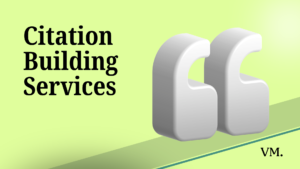Broken link building has emerged as a powerful strategy for improving your website’s SEO and driving traffic. Are you tired of ineffective link-building techniques that yield little to no results? Imagine a method that not only enhances your site’s authority but also helps you build valuable relationships with other webmasters. This comprehensive tutorial will guide you through the intricacies of broken link building, ensuring you can implement it effectively and efficiently.
What is Broken Link Building?
Broken link building is a technique where you identify broken links on other websites and reach out to the site owners, suggesting your content as a replacement. This strategy not only provides value to the website owner by helping them fix their broken links but also allows you to gain backlinks to your site, improving your SEO performance.
Reasons You Need to Know Broken Link Building
Understanding broken link building is essential for anyone looking to enhance their online presence. Here’s why this skill is crucial:
- Boosts SEO: Acquiring high-quality backlinks can significantly improve your search engine rankings.
- Builds Relationships: Engaging with other webmasters fosters valuable connections in your industry.
- Enhances User Experience: By helping others fix broken links, you contribute positively to the web ecosystem.
This method stands out as an ideal solution for those seeking effective link-building strategies without the hassle of traditional outreach methods.
Step-by-Step Instructions to Master Broken Link Building
In this section, we will introduce a unique process that simplifies broken link-building into manageable steps. Follow these steps to maximize your results:
- Identify Broken Links
- Research Relevant Content
- Craft Your Outreach Email
Now, let’s go into each step in detail.
Step 1: Identify Broken Links
Start by using tools like Ahrefs or Check My Links to find broken links on websites within your niche. Focus on high-authority sites, as they will provide more valuable backlinks.
Step 2: Research Relevant Content
Once you’ve identified broken links, find content on your site that can serve as a suitable replacement. Ensure that your content is relevant and offers similar value to what was originally linked.
Step 3: Craft Your Outreach Email
Compose a concise and polite email to the webmaster. Introduce yourself, mention the broken link, and suggest your content as a replacement. Personalizing your message increases the chances of a positive response.
Key Considerations For Successfully Implementing Broken Link Building
While the steps above provide a solid foundation, there are several key insights to keep in mind:
- Quality Over Quantity: Focus on acquiring links from reputable sites rather than targeting numerous low-quality ones.
- Follow-up: If you don’t receive a response, consider sending a polite follow-up email after a week or two.
- Track Your Progress: Use tools like Google Analytics to monitor traffic from newly acquired backlinks.
Taking it to the Next Level: How to Scale Your Broken Link Building Efforts
To further enhance your broken link-building strategy, consider using automation tools like BuzzStream or Pitchbox. These platforms can streamline your outreach process and help you manage relationships with webmasters more effectively.
Alternatives to Broken Link Building
If broken link building doesn’t suit your strategy, consider these alternatives:
- Guest Blogging: Write articles for other websites in exchange for backlinks.
- Resource Page Link Building: Find resource pages in your niche and request inclusion.
- Skyscraper Technique: Create superior content based on popular articles and reach out for backlinks.
Methods for Identifying Broken Links
1. Web-Based SEO Audit Tools
One of the most effective ways to identify broken links is through web-based SEO audit tools. These platforms can crawl websites and provide detailed reports on link status.
- Ahrefs: This tool allows you to perform a site audit by entering the domain of the website you’re interested in. Once the crawl is complete, navigate to the “Broken Links” report to see all broken outbound links that lead away from that site.
- SEMrush: Similar to Ahrefs, SEMrush offers a “Backlink Audit” tool that helps identify broken links on both your site and competitors’ sites. After creating a project and running an audit, you can filter results for broken links and analyze their authority.
2. Google Search Console
Google Search Console is a free tool that provides insights directly from Google about how your site is performing in search results. To find broken links:
- Access the Coverage Report: After verifying your site ownership, navigate to the Coverage report. This will show any errors encountered during Google’s crawl of your site.
- Filter for Errors: Click on the “Error” tab to view pages that are returning errors, including any broken links.
3. Browser Extensions
Browser extensions can provide quick checks for broken links directly from your browser.
- Check My Links: This Chrome extension allows you to scan any webpage for broken links with just one click. It highlights valid links in green and broken ones in red, making it easy to spot issues.
4. Manual Checks
For smaller websites or specific pages, manually checking each link can be effective:
- Click Through Each Link: Systematically visit each page and click on every link. Look for error messages like “404 Page Not Found” or other inconsistencies indicating a broken link. While this method is time-consuming, it ensures thoroughness.
5. Resource Pages
Resource pages often contain lists of useful links related to specific topics. You can identify broken links by:
- Using Link Analysis Tools: Analyze resource pages within your niche using tools like Ahrefs or SEMrush. Check each hyperlink listed and note any that are broken.
6. Dead Link Checker Tools
There are several online tools specifically designed for finding dead links:
Dead Link Checker: This tool allows you to scan an entire website or specific pages for broken links easily. It provides options for customizing searches based on link types or areas of the website.
How Can I Use Google Search Console to Find Broken Links
To find broken links using Google Search Console, follow these steps:
- Set Up Google Search Console: If you haven’t already, create a Google account and set up Google Search Console for your website. Verify ownership through methods such as adding an HTML tag to your site or uploading a verification file.
- Access the Coverage Report: Log in to your Google Search Console account and select the property (website) you want to analyze. In the left sidebar, navigate to the “Coverage” section. This report provides an overview of your site’s indexed pages and any errors.
- Identify Errors: Within the Coverage report, look for the “Error” tab. Here, you’ll find a list of URLs that have encountered issues, including broken links (typically marked as 404 errors).
- Examine Specific URLs: Click on the error type to view detailed information about the affected URLs. This will help you pinpoint which pages or resources are broken.
- Review Referring Pages: To understand where the broken links are coming from, check the “Linked From” report in Google Search Console. This will show you which pages are linking to the broken URLs.
- Fix Broken Links: Once you’ve identified the broken links, you can take action by updating or removing them from your site or contacting webmasters of external sites to suggest your content as a replacement.
By regularly checking Google Search Console, you can stay on top of broken links and maintain a healthy website that enhances user experience and SEO performance.
Wrapping Up and My Experience With Broken Link Building
Mastering broken link building can significantly enhance your website’s authority and visibility online. Having successfully implemented this strategy myself, I’ve seen firsthand how it fosters relationships while boosting SEO performance. By following this comprehensive tutorial, you’re now equipped with the knowledge and tools necessary to embark on your broken link-building journey—start reaching out today!
FAQ
Broken link building is a technique that involves identifying broken or dead links on other websites and reaching out to webmasters to suggest replacing those links with links to your own relevant content. This not only helps improve the user experience of the linking site but also allows you to gain valuable backlinks to your own site, enhancing your SEO performance.
Focusing on broken link building can significantly benefit your website in several ways:
- Improves SEO: Acquiring high-quality backlinks boosts your site's authority and search engine rankings.
- Enhances User Experience: By helping other sites fix broken links, you contribute positively to the web ecosystem.
- Builds Relationships: Engaging with webmasters can foster valuable connections within your industry.
You can identify broken links using several methods:
- SEO Tools: Use tools like Ahrefs, SEMrush, or Google Search Console to find broken links on websites.
- Browser Extensions: Install extensions like "Check My Links" for quick checks directly from your browser.
- Manual Checks: Click through links on specific pages to see if they lead to 404 error pages.
- Resource Pages: Target resource-rich pages that often contain numerous outbound links, making them more likely to have broken links.
You can identify broken links using several methods:
- SEO Tools: Use tools like Ahrefs, SEMrush, or Google Search Console to find broken links on websites.
- Browser Extensions: Install extensions like "Check My Links" for quick checks directly from your browser.
- Manual Checks: Click through links on specific pages to see if they lead to 404 error pages.
- Resource Pages: Target resource-rich pages that often contain numerous outbound links, making them more likely to have broken links.
When reaching out to webmasters, follow these best practices:
- Personalize Your Email: Use their name and reference their work to create a connection.
- Be Clear and Concise: Mention the broken link upfront and explain why your content is a suitable replacement.
- Include Hyperlinks: Provide direct links for easy reference.
- Follow-up: If you don’t receive a response, consider sending a polite follow-up email after a week or two.
To create effective replacement content:
- Research the original content linked by the broken link to understand its purpose and audience.
- Develop high-quality, relevant content that fulfills the same need or topic as the original page.
- Ensure that your content is well-optimized for SEO with appropriate keywords, headings, and internal linking.
Common mistakes include:
- Failing to personalize outreach emails, leads to lower response rates.
- Not vetting the quality of replacement content before suggesting it.
- Ignoring follow-ups can result in missed opportunities.
- Targeting low-authority sites instead of focusing on reputable domains.
To measure success:
- Track the number of backlinks acquired through your outreach efforts using tools like Google Analytics or Ahrefs.
- Monitor changes in organic traffic and search rankings after acquiring new backlinks.
- Assess user engagement metrics on the pages linked from your outreach efforts (e.g., bounce rate, time on page).
Yes, broken link building is considered a sustainable white-hat SEO strategy. It focuses on creating value for both parties involved—helping webmasters improve their sites while earning quality backlinks for yours. By consistently identifying and addressing broken links, you can maintain an effective ongoing strategy that contributes positively to your website's SEO health.



